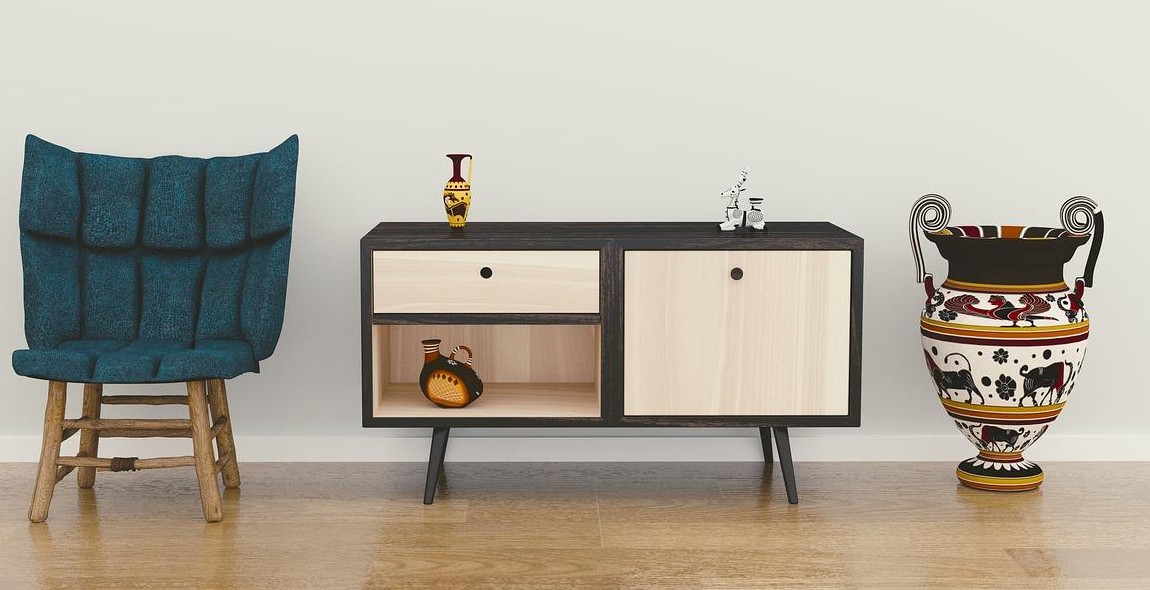How to Incorporate Colors in Feng Shui: Balancing Energy in Your Home
Feng Shui is an ancient Chinese practice that focuses on the arrangement and placement of objects in a space to create a harmonious flow of energy. One of the key elements of Feng Shui is the use of colors to balance the energy in a home. Each color has its own unique energy and can be used to enhance different areas of your life.
The Importance of Color in Feng Shui
Color plays a crucial role in Feng Shui as it has the ability to affect our emotions, moods, and even our physical well-being. By incorporating the right colors in your home, you can create a peaceful and harmonious environment that supports your goals and aspirations.
Understanding the Meaning of Colors in Feng Shui
In Feng Shui, each color is associated with a specific element and has its own unique properties and symbolism. For example, red is associated with the fire element and represents passion and energy, while blue is associated with the water element and represents calmness and tranquility.
By understanding the meaning of colors in Feng Shui, you can choose the right colors for each room in your home to create a balanced and harmonious energy flow.
How to Incorporate Colors in Your Home
There are many ways to incorporate colors in your home using Feng Shui principles. You can use color in your home decor, such as with paint, furniture, and accessories. You can also use color in your clothing, jewelry, and other personal items.
By using color intentionally and with purpose, you can create a home that supports your goals and aspirations, and promotes a sense of well-being and harmony in your life.
Understanding Feng Shui Colors
Feng Shui is an ancient Chinese practice that involves arranging your environment in a way that promotes positive energy flow. One crucial aspect of Feng Shui is the use of colors to balance the energy in your home. According to Feng Shui principles, colors have a significant impact on our emotions, mood, and well-being. Different colors represent different elements and energies, and understanding their meanings can help you create a harmonious living space.
The Five Elements of Feng Shui Colors
Feng Shui colors are based on the Five Elements theory: Wood, Fire, Earth, Metal, and Water. Each element has a specific color palette and represents a unique aspect of life. Understanding the Five Elements theory is essential in selecting the right colors for your home and achieving balance and harmony.
| Element | Color Palette |
|---|---|
| Wood | Green, Brown |
| Fire | Red, Orange, Yellow, Pink, Purple |
| Earth | Light Yellow, Beige, Sandy/Earthy |
| Metal | White, Gray |
| Water | Blue, Black |
The Meaning of Different Colors in Feng Shui
Each color in Feng Shui represents a different energy and can affect your mood and well-being. Here’s a breakdown of the meaning of different colors in Feng Shui:
- Red: Represents Fire element, symbolizes passion, love, and energy. It can also stimulate appetite and conversation, making it an ideal color for the dining room.
- Yellow: Represents Earth element, symbolizes happiness, warmth, and stability. It’s a great color for the kitchen or living room.
- Green: Represents Wood element, symbolizes growth, renewal, and healing. It’s an excellent color for the bedroom or study.
- Blue: Represents Water element, symbolizes calmness, tranquility, and relaxation. It’s an ideal color for the bathroom or bedroom.
- Purple: Represents Fire element, symbolizes luxury, creativity, and spirituality. It’s an excellent color for the meditation room or living room.
- White: Represents Metal element, symbolizes purity, clarity, and precision. It’s a great color for the home office or study.
- Black: Represents Water element, symbolizes power, strength, and depth. It’s an ideal color for the front door or entryway.
Understanding Feng Shui colors can help you create a harmonious and balanced living space. Consider the Five Elements theory and the meaning of different colors when selecting colors for your home. With a little bit of knowledge and creativity, you can transform your living space into a peaceful and positive environment.

Incorporating Feng Shui Colors in Your Home
Feng Shui is an ancient Chinese practice of arranging objects and colors in a way that balances the energy in your surroundings. One of the most important aspects of Feng Shui is the use of colors in your home. Each color has a specific meaning and can affect the energy flow in different ways. In this section, we will discuss how to incorporate Feng Shui colors in your home.
Choose Colors Based on Bagua
The Bagua is a Feng Shui map that divides your home into nine areas, each representing a different aspect of your life. To choose the right colors for each area, you need to understand the meaning of each color and its effect on the energy flow. For example, red is associated with passion and energy, while blue is calming and peaceful. Depending on the area of your home, you can choose colors that enhance or balance the energy flow.
Using Colors to Balance Energy in Specific Rooms
Each room in your home has a different purpose and energy flow. For example, the bedroom should be calming and relaxing, while the kitchen should be energizing and stimulating. To balance the energy flow in specific rooms, you can use colors that enhance the desired mood. For example, in the bedroom, you can use soft, pastel colors like pink or blue to promote relaxation and restful sleep.
Feng Shui Color Tips for Different Areas of Your Home
Here are some Feng Shui color tips for different areas of your home:
- Living room: Use warm colors like red, orange, or yellow to create a welcoming and social atmosphere. Avoid using dark or cool colors that can make the room feel uninviting.
- Dining room: Use red or orange to stimulate appetite and conversation. Avoid using blue or green, which can have a calming effect and reduce appetite.
- Kitchen: Use bright, warm colors like red or orange to stimulate energy and appetite. Avoid using cool colors like blue or green, which can have a calming effect and reduce energy.
- Bedroom: Use soft, pastel colors like pink or blue to promote relaxation and restful sleep. Avoid using bright or stimulating colors like red or orange, which can disrupt sleep.
- Bathroom: Use light, neutral colors like white or beige to create a clean and fresh atmosphere. Avoid using dark colors that can make the room feel small and cramped.
- Home office: Use green or blue to promote focus and productivity. Avoid using red or orange, which can be too stimulating and distracting.
By incorporating Feng Shui colors in your home, you can create a harmonious and balanced environment that promotes health, happiness, and prosperity.
Feng Shui Color Mistakes to Avoid
Colors play a significant role in Feng Shui, and they can either enhance or hinder the flow of energy in your home. Therefore, it is essential to choose the right colors and avoid some common mistakes. Here are some Feng Shui color mistakes you should avoid:
Using Too Much of One Color
While it is good to have a color theme in a room, using too much of one color can create an imbalance in energy. For instance, if you paint your entire room red, it can create an overwhelming and aggressive energy that can lead to stress and tension. Therefore, it is essential to balance the colors by adding other colors that complement the main color.
Ignoring the Bagua Map
The Bagua Map is an essential tool in Feng Shui, and it helps to determine the areas of your home that correspond to different aspects of your life. Each area has a specific color that enhances the energy flow in that area. Therefore, ignoring the Bagua Map can lead to the wrong choice of colors and imbalance in energy. For instance, painting the bedroom in the color of the wealth area can hinder your sleep and create financial stress.
Not Considering Personal Preferences
While it is essential to choose colors that enhance the energy flow in your home, it is also important to consider your personal preferences. The colors you choose should resonate with you and create a sense of comfort and happiness. Therefore, it is recommended to choose colors that you love and make you feel good. You can also incorporate your favorite colors in small accents such as pillows, curtains, and artwork.
Avoiding these Feng Shui color mistakes can help create a harmonious and balanced energy flow in your home. Remember to balance the colors, consider the Bagua Map, and incorporate personal preferences when choosing colors.

Conclusion
Incorporating colors in Feng Shui is an effective way of balancing energy in your home. By understanding the principles of Feng Shui and color psychology, you can create a harmonious living space that promotes health, happiness, and prosperity.
Key Takeaways
- Colors are an important aspect of Feng Shui and can influence the energy in your home.
- Each color has a unique meaning and can be used to promote different energies.
- It is important to use colors in the right way to create a harmonious balance in your living space.
- Using a color wheel can help you choose the right colors for your home.
- Integrating colors in your furniture, décor, and accessories can enhance the overall energy flow in your home.
Final Thoughts
When it comes to incorporating colors in Feng Shui, there are no hard and fast rules. It is all about finding what works for you and your living space. By experimenting with different colors and combinations, you can create a home that is not only beautiful but also promotes positive energy and wellbeing.
| Remember: | Colors can have a profound impact on our emotions and well-being. By incorporating colors in Feng Shui, you can create a home that promotes health, happiness, and prosperity. |
